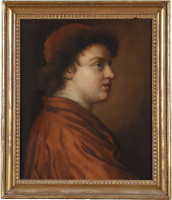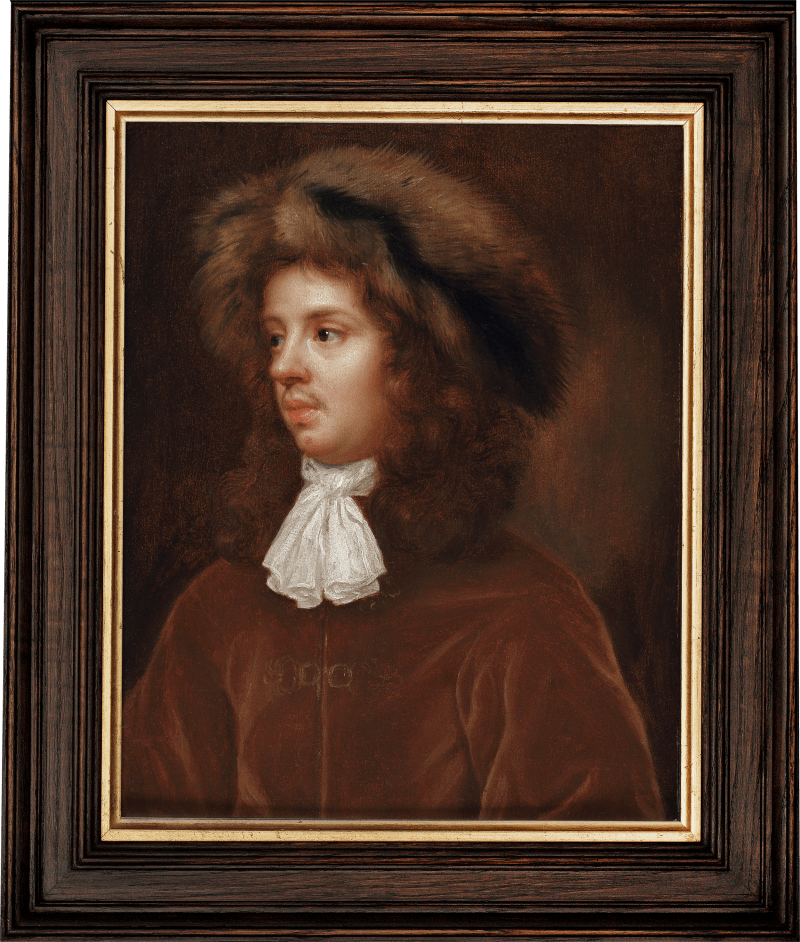Among the most celebrated works by Mary Beale are her depictions of her immediate family. This wistful portrait study is likely to portray her son, Charles Beale the Younger.
Completed of her own accord for ‘study and improvement’, Beale’s head studies are strikingly informal and predominantly depict members of her family and household. The best known of these is her series of around twelve surviving head studies of her son Bartholomew, painted in the 1660s. Beale continued this innovative practice throughout the 1670s and 1680s, capturing her family members in differing poses. The present work, though more highly finished, retains an air of familial intimacy.
A portrait of Charles is included in his mother’s Self-Portrait of circa 1666, which shows the artist alongside head studies of both of her sons as young children. A resemblance is found in another striking portrait by Beale, conjectured to be of Charles the Younger and exhibited as such in the Moyse’s Hall Museum’s exhibition...
Among the most celebrated works by Mary Beale are her depictions of her immediate family. This wistful portrait study is likely to portray her son, Charles Beale the Younger.
Completed of her own accord for ‘study and improvement’, Beale’s head studies are strikingly informal and predominantly depict members of her family and household. The best known of these is her series of around twelve surviving head studies of her son Bartholomew, painted in the 1660s. Beale continued this innovative practice throughout the 1670s and 1680s, capturing her family members in differing poses. The present work, though more highly finished, retains an air of familial intimacy.
A portrait of Charles is included in his mother’s Self-Portrait of circa 1666, which shows the artist alongside head studies of both of her sons as young children. A resemblance is found in another striking portrait by Beale, conjectured to be of Charles the Younger and exhibited as such in the Moyse’s Hall Museum’s exhibition on the artist in 2021. A further likeness in a chalk study by Charles the Younger himself, thought to be a self-portrait, also includes a prominent wart above his right jaw, and he is also presented wearing the same fur-edged hat that appears here and in other portraits of family members. In 1681, paintings recorded for ‘study and improvement’ included a painting of ‘Son Charles looking up’.[1]
Charles the Younger was establishing himself as a painter in his own right around the time when this work was likely painted. Having trained with the portrait miniaturist Thomas Flatman, and as a dedicated assistant in oils in his mother’s studio for many years, Beale the Younger boasted a rich artistic training. He is today best-renowned as an excellent draftsman on account of his extensive series of red-chalk drawings held at the British Museum, and for his naturalistic portrait miniatures.
[1] Beale, ‘Dairy 1680/1’.











